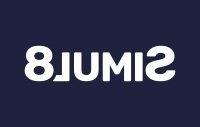弗朗西斯却, 在Simul8的CTO, discusses the important role its simulation modelling has played during the pandemic.
The past twelve months have been filled with uncertainty. We’ve been living in a world of ‘what-ifs’ and ‘maybes’ while we try and navigate through the challenges of living with 新型冠状病毒肺炎。. Decisions have to be made quickly, but when lives are at risk no one wants to be guessing.
The role of forward planning has never been more important, 无论是为了保护员工, 应对关键挑战, minimise the spread of the virus or keep operations going while under restrictions. Where often there has been limited real-world experience or guidance to quickly develop strategies, simulation modelling has come into its own in helping organisations make important decisions throughout the pandemic. It allows scenarios to be tested rapidly and risk-free before implementation, and be continually re-evaluated as more information becomes available.
When the first wave began to hit critical mass early last year, we wanted to contribute something towards the fight. We created a digital simulation model that could help health services to assess ICU resource allocation to make sure that there were enough beds, ventilators and staff to cope with the expected surges in critical needs. This was made available to health systems for free and we had an enormous take-up.
NHS拉纳克郡, 例如, worked in collaboration with University of Strathclyde in using our modelling software to ensure that the 更新 to ICU capacity that they were making would be sufficient to handle the added strain on resources. This provided essential support in managing capacity, not to mention the peace of mind that it gave to staff on the front line.
Our modelling has also been used in the construction of overflow hospitals in major cities, planning for drive-through testing centres and now for the distribution of the vaccine.
While we have worked with healthcare organisations right across the UK, our work has also had an international reach. 在芝加哥, Simul8 was used as part of a community outreach programme as Saint Anthony’s sought to double its capacity for one day when they would provide additional vaccinations for people from deprived neighbourhoods. In Pittsburgh we provided Simul8 to another hospital group that manages 11 different campuses to help them optimise the delivery of 20,000 vaccinations every single week across its estate.
我们也与Controlant合作过, a company headquartered in Iceland that specialises in cold supply chain logistics that has been working in the distribution of the Pfizer-BioNTech vaccine. It needed to triple production of its specialist IoT trackers that are used to monitor shipments of the vaccine to ensure that they remain at the required -70 degrees to stay effective. Again, it was our simulations that demonstrated how this tremendous feat could be made possible.
在过去的一年里, 超过£100,000’ worth of pro-bono software licenses have been provided by Simul8. These have mostly been given to healthcare organisations, but we’ve also worked with universities, 地方和国家当局, 慈善机构和企业.
Simulation has helped these organisations in planning how to bring staff back safely and get business moving again, such as how to reconfigure workspaces to allow for social distancing, 温度检查, 更安全的通道和额外的通风.
The use of digital modelling techniques to support operational management like this has certainly increased significantly over the last year. 我们面临着持续的挑战, such as managing growing NHS waiting lists, 流动工人回到办公室, or even getting live events back up and running, simulation will continue to play a vital role in the world’s recovery.

